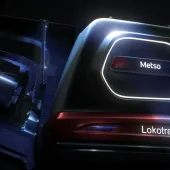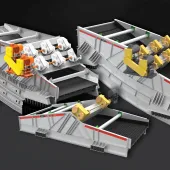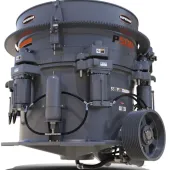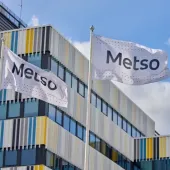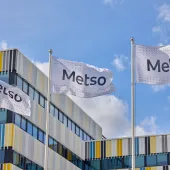Optimized Performance Through Screen Media Design

First published in the February 2019 issue of Quarry Management
The efficiency of screening processes is influenced significantly by choosing suitable screen media. As Lars Bräunling, screen media product manager at Haver & Boecker and Major Wire, explains, the media type, specification and material are core parameters with which screening performance and wear life can be influenced.
Screening technology is a central part of raw material preparation and takes on various functions in both mines and quarries, from scalping, through protective screening to classification of sellable products.
The wide range of technical requirements makes an equally wide range of solutions necessary. This means both the selection of the right machinery equipment and its operating parameters, plus the selection of a suitable screen medium.
The various types of screen media have very different properties with respect to achievable throughput. This is determined, among other factors, by the available open area, for which the following distinction is necessary: the often-used calculated open area states the area of all holes compared with the combined area of holes and wires (or polyurethane bars etc) and is expressed as a percentage1.
However, in practice, more relevant for the capacity of the screen is the true open area, which provides the actual proportion of open and total area on a specific screen deck, including all blind areas, which, for example, are caused by the support bars for the screen, fastening points, polyurethane strips etc. This is, however, more complex to determine, since it depends upon the individual screen medium and the machine.
An intelligent screen panel design can increase the area available for screening and therefore the capacity of the machine (fig 1).
In actual operation, this open surface is often reduced even further, since, in many processes, the screened product gradually closes the openings of the screen. This occurs either through pegging of material, meaning particles that get permanently wedged in the mesh, or through blinding. This is caused by fine material sticking to the surface of the wire due to its moisture or clay content, and then continuing to accumulate (fig 2). Both problems can be prevented through selection of a suitable screen, for example, by using opening shapes that reduce the chance of material getting stuck, or through the use of particularly smooth wires to which fine material does not stick as easily.
To achieve the highest possible capacity on a given screen area, the undersized particles that are to be screened off have to come into contact with the screen surface as quickly as possible. Therefore, the material needs to be shaken up and turned over, which is accomplished through the vibration of the screen machine2.
This leads to the physical effect of stratification, or layer formation (fig 3). Small particles keep dropping down into cavities between larger particles and, therefore, sink down in the material bed3. This process can be accelerated using suitable screen media.
Passive vs Active
There are two basic categories: passive (ie rigid) screen media, such as wire mesh, perforated plates and most rubber or polyurethane (PU) panels; and active screen media, including Flex-Mat, which has single wires lying next to each other with minimal fixation. Once material runs over this surface, the impact induces vibration in the wires, which accelerates the stratification process. This has led to immense increases in throughput in numerous applications, while maintaining a precise separation (fig 4).
The goals of increasing screen capacity and maximizing wear life are diametrically opposed, since an increase in open area always means a reduction in material usage and vice versa.
To address this problem, Flex-Mat uses Optimum Wire, a high-tensile wire with its own formulation. It contains the ideal amount of carbon and manganese, both of which guarantee the best possible wear resistance, and it is drawn in the patented process. In a direct comparison with other spring steels, this wire can achieve wear life advantages of up to 40%.
Through selection of suitable screen media and individual configuration, additional potential can be unlocked in many screening processes. This can mean the machine capacity, the product quality or the screen wear life. But screen media exchange times and plant downtimes can also be reduced and production times in difficult weather conditions can be extended.
Ultimately, however, achieving the best-possible screening performance and wear life is dependent on correct installation and tensioning of the screens, which, in turn, is a matter of screen design and its maintenance condition. In a recent case in south-west Germany the wear life of screen media could be increased from an average of four weeks to 14 weeks just by optimizing tensioning and installation details.
Individual consulting and technical support are, therefore, the only way to achieve optimum performance with each screen, and with more than 35,000 applications in Europe, North and South America, Africa and Australia, in a variety of industries including aggregates, sand, and recycling, Haver & Boecker and their subsidiary Major Wire have the necessary experience to achieve this.
REFERENCES
- SCHUBERT, H.: ‘Preparation of solid mineral raw materials’ – Vol. 1. VEB German Publishing House for Basic Industry, 1989, S. 208.
- Ibid, S. 196
- DIN ISO 9045:1998-12: Industrial screens and screening – Vocabulary. 3.3.12.
ACKNOWLEDGEMENT
This article first appeared in the November 2018 edition of Quarry magazine, the official journal of the Institute of Quarrying Australia, and is reproduced by kind permission.
- Subscribe to Quarry Management, the monthly journal for the mineral products industry, to read articles before they appear on Agg-Net.com


